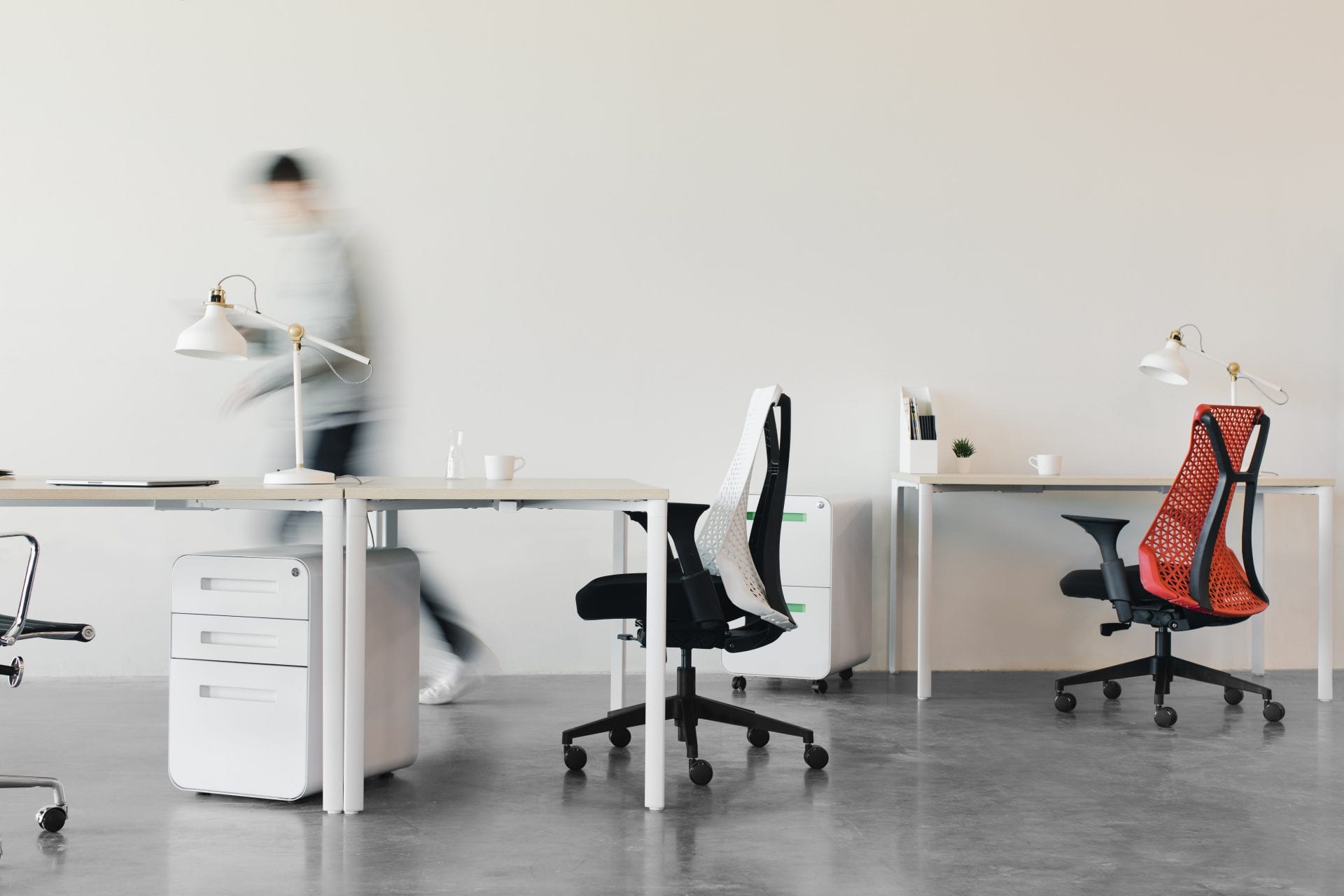
To mark Backcare Awareness Week, leading UK back-pain-prevention expert and Health Ergonomist Nichola Adams offers practical advice on coping with the growing challenges of working from home
Nichola Adams, a Technical Member of The Chartered Institute of Ergonomics and Human Factors and Founder of Inspired Ergonomics, has compiled her top 10 tips to avert back pain for this week’s Backcare Awareness Week (October 5-9) .
Combining the Greek words ergon (meaning ‘work’) and nomoi (meaning ‘natural laws’), Ergonomics is the science of making products and tasks comfortable and efficient for human use.
“Health Ergonomics is a multidisciplinary science. It combines biomechanics (how our bodies move), anthropometrics (our measurements) and psychology to enable us to design products and services that best match people’s physical, as well as mental, capabilities,” explains Nichola.
She explains that “ergonomics recognises that we are all individuals and that there will be many external influences that affect our recovery. This includes the environment as well as social factors that affect, for instance, our attitudes towards our back pain, our stress levels and other influencing factors that can influence our levels of back pain.”

1. Keep moving
When you do, blood flows more easily and brings nutrients and oxygen to your tissues and muscles. When sitting at your computer, standing breaks are vital. Take one every 30-60 minutes. Just standing up and siting back down will provide a beneficial boost. Take your laptop to a higher surface like a kitchen worktop or chest of drawers, then stand a while. Own a patio or garden? Work outside. Fresh air blows away brain cobwebs.
2. Eat well, stay hydrated
Keeping the body stocked with immune-boosting, antioxidant-rich foods is key. Antioxidant foods are also anti-inflammatory. Enjoy dark fruit and leafy vegetables. Magnesium-rich foods are also good for reducing mental and physical stress. Check your vitamin D levels with a home testing kit. Keep hydrated, aiming for 7-8 glasses a day. It’s all too easy, when we’re working hard, to forget to drink enough water.
3. Sit up straight
While moving regularly is key, sitting upright will also help reduce the load on your spine. Don’t sofa-slouch! If you only have your sofa to work from, mimic a good set-up. Build a supportive back using cushions (deep sofas cause slouching). Pop a cushion under your laptop to protect yourself against its heat and raise it up. Try an adjustable laptop holder that’s made for sofa or bed use.
4. Care about your chair
Sit on a chair whenever possible. If it’s a dining chair, not an office one, always try to ensure your lower-back curve is supported as this is particularly good for easing tension build-up on sensitive backs. You can use a cushion or rolled-up towel for extra support. Better still, buy an inflatable lumbar support cushion for your lower-back curve. Ask your employer if they’ll offer you budget for a chair with a lumbar support and adjustable seat height and armrests. Always sit with your arms level with the top of the desk as this will help you avoid flicking up your wrists or hunching your shoulders to type.
5. Get your screen height right
If you’re using a laptop, make sure you can either dock it onto a larger screen that’s at eye height, or raise the laptop onto some books. Alternatively, try using a laptop holder so that you aren’t slouching or looking down to read the screen as this will load unwelcome pressure onto your neck, shoulders and back. Then use a separate keyboard and mouse.
6. Mind the gap
When using a keyboard and mouse, keep these close to the front of your desk so that you don’t find yourself in a position where there’s a gap and you’re needing to extend your arms forward when typing. Failure to do this can quickly bring on shoulder and neck tensions as our arms are surprisingly heavy when extended forward. Keep your wrists relaxed and straight in order to reduce pressure building up.
7. Stay positive
Maintaining a positive frame of mind is more important than many people realise. And your brain has a far bigger say in your body’s ability to feel pain than you might imagine. If we’re stressed and worried, our body naturally tenses up. The brain then goes on alert for pain. Despite the distractions of the pandemic, try to take time out for yourself and just relax. (Bonus mini-tip: A magnesium hot bath can also work wonders for the brain and body.)
8. And . . . breathe
Slowing down your breathing can impact your cortisol levels. This brings down your stress levels and keep the oxygen flowing through the body. Try this exercise: Step 1: Breathe in for a count of five. Step 2: Pause for a count of four. Step 3: Breathe out for eight beats. Step 4: Then pause for four. Step 5: Repeat. Get used to the maths and you’ll notice the difference straightaway.
9. Exercise gently
With no office commute, exercising daily becomes essential. Try a morning stroll, jog or cycle as morning light helps with your circadian rhythm (helping our sleep/wake cycles) and vitamin D levels. Maybe treat yourself to a visit to your local park or a coffee, to encourage yourself to get out. By venturing out in the mornings, before work gets busy, we’re more likely to stick to the routine. Try stretching exercises, too, like yoga or Pilates.
10. Remember, you’re worth it!
Focus on yourself and ring-fence extra time to keep in tune with what gives your life meaning and purpose. Remembering to take regular breaks at home isn’t easy, so use technology to set yourself automatic reminders on your mobile. When working from home, find ways to support your body so your muscles relax.
Photographs by Unsplash





















